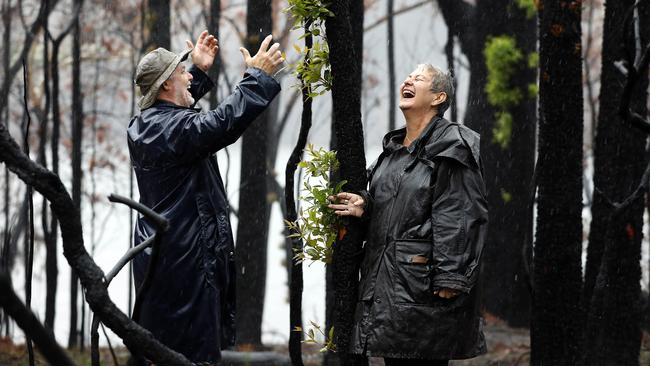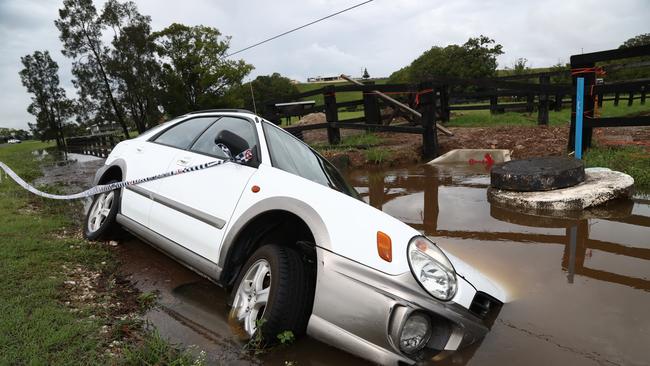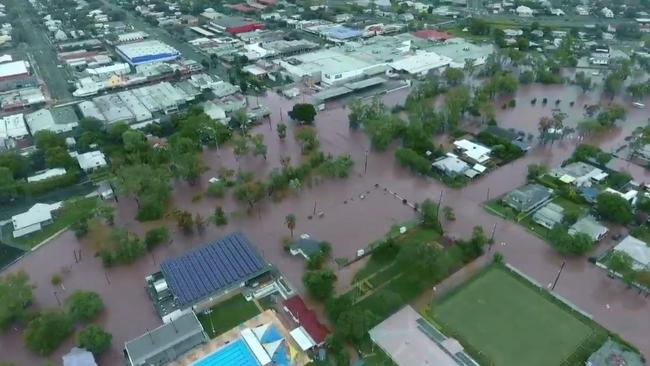When it rains it pours for Conjola Park on NSW south coast
As torrential rain fell on the blackened earth at Conjola Park, Michelle Morales could barely wipe the smile from her face.

As torrential rain fell on the blackened earth at Conjola Park on the NSW south coast, Michelle Morales could barely wipe the smile from her face.
For the first time since the ferocious Currowan bushfire roared through the township on New Year’s Eve, claiming 89 homes and three lives — including that of her longtime partner — Ms Morales felt at peace.
“I feel like I can breathe again. This rain delivers hope, it means the fires are finally gone and we can truly start the process of rejuvenation,” Ms Morales told The Australian as the welcome deluge poured down around her.
The 62-year-old, a primary school science teacher who has lived permanently in Conjola Park since 2015, has suffered through six weeks of immense grief, not only for her partner but for her community that was obliterated by the firestorm.

Ms Morale’s house came dangerously close to being engulfed by flames, with a few neighbouring homes to the back of her property destroyed and a row of trees in her backyard burnt to a crisp.
“It was very surreal,” Ms Morales said. “Everyone was really calm even as the flames started roaring in. And although it swept through over a few hours, the time went really fast.”
Neighbours Shane and Lisa Allen, whom she describes as her heroes, defended her property from the flames and put out spot fires around her home caused by ember attack.
“I’m so grateful for them, they’re my heroes,” Ms Morales said.
Her partner died battling the blaze as he attempted to protect his nearby property.
At 8pm on Saturday, the NSW Rural Fire Service reported the Currowan fire had been extinguished after burning through 499,621ha over 74 days, claiming 312 homes.
Conjola Park recorded 57mm of rain at the weekend and the Bureau of Meteorology is predicting another 100-150mm to fall across the region on Monday.

The intense low pressure system that has battered the NSW east coast over the past few days will ease on Tuesday as it slowly moves south, but the BOM predicted more showers and possible storms for the entire week.
Mr Allen told The Australian the rain was not only delivering hope to their local community but also suppressing the asbestos that had been released as homes in the area were burnt to the ground.
A majority of the destroyed houses in Conjola Park are fenced off with tape and signs warning of asbestos. He said the NSW Environment Protection Authority, which is co-ordinating the clean-up and monitoring asbestos levels, hadn’t engaged in official communication with locals about their safety.
“We’re really concerned that the levels of asbestos are too high. We just want to know if we’re going to have to leave as the clean-up begins,” Mr Allen said.
“I’m not too concerned for myself because I’m 50 and it probably won’t affect me in my lifetime but there are still kids living here right next to asbestos sites and that’s a major concern.”
Ms Morales said the rain was a double-edged sword because they were now concerned that ash, asbestos and waste would now be flowing into Lake Conjola.
“That will potentially severely damage the ecosystem of the lake, affect the pH levels and harm the fish,” Ms Morales said.
“As much as we’re so happy for this rain, it also slows the clean-up process.”
Ms Allen said the locals had felt “abandoned” in the weeks after the bushfire as tourists fled and media interest abated.
“We were abandoned from the get-go by the RFS and services, and then we were abandoned by everyone else,” Ms Allen said.
“At times it’s hard not to feel like we might never fully recover from this, but I know we will.”
While inspecting shoots of regrowth on trees down by the lake, Ms Morales said she was hopeful their community would not be forgotten.
“I hope people feel confident enough to come back,” Ms Morales said.
“It’s such a nice little community and that’s what brought me here in the first place.”



To join the conversation, please log in. Don't have an account? Register
Join the conversation, you are commenting as Logout